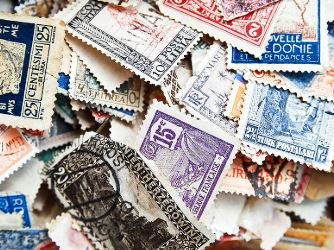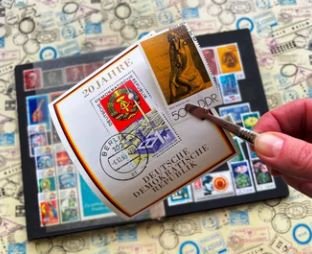Postal mail stamps have fascinated collectors and enthusiasts for centuries. They serve not only as essential tools for sending letters but also as historical artifacts that tell the stories of different countries, events, and cultures. For collectors, postal mail stamps are a gateway to discovering rare treasures or, unfortunately, falling into the trap of common fakes. Whether you’re a seasoned philatelist or just starting, understanding how to identify genuine postal mail stamps and avoid counterfeit ones is crucial. In this article, we’ll guide you on how to discover rare treasures in postal mail stamps while being vigilant about avoiding common fakes.

Why Postal Mail Stamps Are Valuable
Postal mail stamps are more than just postage; they are miniature works of art and a reflection of a country’s culture, history, and sometimes its political climate. Some stamps are printed in limited quantities, making them highly sought after by collectors. Other stamps may commemorate significant events or personalities, and these too can hold substantial value. The excitement of stamp collecting lies in the thrill of discovering rare treasures hidden within stacks of old postal mail stamps.
However, with the rise of counterfeit stamps, it’s important to be cautious. Postal mail stamps can sometimes be reproduced or altered, and without the proper knowledge, it’s easy to fall for these common fakes.
How to Discover Rare Treasures in Postal Mail Stamps
When it comes to postal mail stamps, there are a few key things to keep in mind if you’re looking to discover rare and valuable items. The world of stamps can be overwhelming, but with patience and the right approach, you can find those hidden gems.
- Learn the History and Rarity of Stamps One of the first steps in discovering rare treasures in postal mail stamps is learning about their history and rarity. Certain stamps are rare because they were printed in limited runs, or because they were issued during times of political unrest or historical significance. For example, stamps from the early 1900s or those with printing errors are often worth far more than more modern, mass-produced stamps.
- Check for Printing Errors Some of the most valuable postal mail stamps are those with printing errors. A common error might include misprints or color variations that happened during the printing process. For instance, stamps with missing colors, inverted images, or strange perforations can become extremely valuable over time. If you’re hoping to discover rare treasures in your collection, always keep an eye out for these potential errors.
- Evaluate Condition and Quality The condition of your postal mail stamps plays a huge role in determining their value. Stamps in pristine condition, with no tears, creases, or discoloration, are much more valuable than those in poor condition. The best stamps are often stored and handled carefully to preserve their original state. Collectors typically use tongs or gloves to avoid touching the stamp with their fingers, as oils from the skin can degrade the paper over time.
- Look for Special Features Certain postal mail stamps may have features that make them more valuable, such as perforations that are unusual or unique, stamps with unusual embossing, or limited edition releases. Checking for these special features can help you identify rare stamps that might be overlooked by others.
- Buy from Trusted Sources To increase your chances of discovering rare treasures, it’s important to purchase postal mail stamps from trusted sources. Reliable dealers, stamp shows, and well-known auction houses are great places to find authentic, high-value stamps. If you buy from online marketplaces or unknown sellers, be sure to check their reviews and ratings to avoid buying counterfeit items.

How to Avoid Common Fakes in Postal Mail Stamps
While the search for rare postal mail stamps can be exciting, it’s equally important to be cautious about counterfeit stamps that can easily deceive collectors. Common fakes abound in the world of stamp collecting, and identifying them requires a keen eye and knowledge of stamp characteristics.
- Know the Characteristics of Authentic Stamps A great way to avoid falling for common fakes is to familiarize yourself with the characteristics of genuine postal mail stamps. Understand the material used for printing, the color schemes, and the unique features that each stamp has. For instance, older stamps may have a different feel or texture than modern ones. Knowing these nuances will help you spot a fake when you see one.
- Check the Perforations Fake postal mail stamps often have irregular perforations or no perforations at all. Authentic stamps have uniform, well-defined perforations, which are part of the printing process. Counterfeit stamps, on the other hand, may have uneven or poorly executed perforations. Using a magnifying glass to examine the perforations closely can help you avoid purchasing fake stamps.
- Watch Out for Reproductions Many counterfeit postal mail stamps are reproductions of older, more valuable stamps. These reproductions are often sold as “replicas” or “commemorative stamps,” but they have little to no value. Be cautious when purchasing older stamps, especially those that seem too good to be true in terms of condition or price.
- Examine the Printing Method One way to identify fake postal mail stamps is to examine the printing method. Traditional stamps were often produced using lithography or engraving, whereas counterfeit stamps might be printed using modern digital processes. Authentic stamps will usually have a slight texture that is difficult to replicate with digital printing.
- Get Expert Authentication If you’re unsure whether a stamp is real or fake, it’s always a good idea to seek expert authentication. Reputable dealers, professional appraisers, and stamp certification organizations can help verify the authenticity of your stamps. This step is particularly important when dealing with high-value or rare postal mail stamps.

Conclusion: Discover Rare Treasures or Avoid Common Fakes
Stamp collecting is a thrilling hobby that offers the opportunity to discover rare treasures within the world of postal mail stamps. By learning about the history, rarity, and special features of stamps, you can enhance your collection and uncover valuable items that will increase in worth over time. However, it’s equally important to be aware of common fakes. By knowing the characteristics of authentic stamps and remaining cautious when purchasing, you can avoid overpaying for counterfeit items.
Ultimately, the key to successful stamp collecting lies in your knowledge, patience, and attention to detail. Whether you’re in search of rare treasures or hoping to avoid common fakes, taking the time to research and understand the world of postal mail stamps will ensure that you build a valuable, authentic collection.




